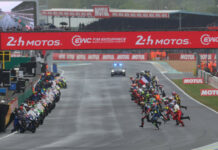Outline of the New Medium-term Management Plan Yamaha Motor Co., Ltd. (the “Company”) has formulated its New Medium-term Management Plan for the three-year period from 2013 through 2015. This Plan is an extension of the current 2010-2012 new-medium-term management plan which targeted a V-shaped recovery and stable profitability, and is intended to aggressively expand the Company’s business scale and improve its profitability, all with the aim to increase its corporate value through sustained growth. The numerical targets of the new medium-term management plan (2013-2015) are set to a consolidated net sales of 1,600 billion yen (a 400 billion yen increase compared with the forecast figures for 2012), a consolidated operating income of 80 billion yen (a 52 billion yen increase on 2012), and a consolidated operating income margin of 5% (a 2.7% increase on 2012). These targets are set to work towards a net sales figure of 2 trillion yen, and an operating income margin of 7.5% by 2017. The figures stated here are based on the assumption that the U.S. dollar will trade at 80 yen during the period (a depreciation of two yen based on the ratio seen in fiscal 2012), and the euro at 105 yen (a depreciation of three yen based on 2012 figures). In order to expand the Company’s business scale, we will target total sales of 9 million units which will include the introduction of 250 new models in the three-year period of the plan. Additionally, with the aim of improving profitability, we will target a cost reduction of 90 billion yen by making reforms in all processes in the areas of development, procurement, production and logistics. ROE (Return on Equity) will also be set as an important managerial index to enhance overall corporate strength including profitability, asset efficiency and safety. New Medium-term Management Strategy To surpass customer expectation through original concepts unique to Yamaha 1. Engineering excellence 2. Marketing excellence 3. Taking on new businesses Continuing initiatives to increase management efficiency and effectiveness 1. Execute an even more ambitious cost reduction program on a global scale – systematic improvements that realize greater cost savings 2. Achieving structural reforms 3. Advancing towards true globalization Key Business Strategies Motorcycle business – India: Strengthen mass-market focus in a country which continues to show significant growth While aggressively introducing new models such as scooters and lower-priced models, achieve low-cost manufacturing and strengthen production capacity. In addition, expand sales network and strengthen links with customers. – ASEAN: Cater to diversifying customer needs in a market which is beginning to show stable growth Develop common platforms and variations based on fuel-efficient engines. Propose values that are more than simply a mode of transport through the development of low-cost platform. Aim to strengthen links with customers through high touch marketing closely tied to the market. – Developed Markets: Increase lifetime customers in a recovering market where there is strong potential demand Create a Yamaha sphere by expanding the lineup from entry to flagship models and carry out lifetime marketing while proposing new concepts. Marine Business: Aim for net sales of 300 billion yen Outboard motors: Gain stable share through close links between boat builders and engines that are highly reliable, lightweight and fuel-efficient. Boats: Following our entrance to the Brazilian market, enter the Chinese market (pleasure and work boats). Water Vehicle: Expand the business of supplying jet propulsion engines. SPV (Smart Power) Business: Target sales of 1 million units Electro-hybrid bicycles: Accelerate the introduction of new models into the ever-expanding Chinese market. PAS: Introduce multi-functional models within Japan. Actively work to increase presence in the European market through the supply of OEM units. Electric motorcycles: Introduce low-priced models with an aim to increase popularization. Recreational Vehicle Business: Achieve both expansion and efficiency New off-road vehicle: Introduce the new model into the market from 2013. All-terrain vehicles: Implement engine procurement strategy with the completion of the transfer of body production to the US. Snowmobiles: Improve the efficiency of business operations through cooperation with other companies in 2013. Financial Strategies: Balance aggressive growth investments with stock dividends and loan repayments. The current management plan prioritized the improvement of financial resilience and the amount of investment was restricted to covering depreciation. However, the new medium-term management plan aims for aggressive growth-driving investments. – The amount of investment is set to depreciation + half of net income of the current term. Balance stock dividends and loan repayments. (Total investment in the forecast current medium-term results: 125 billion yen; the total investment in the new medium-term plan: 190 billion yen.) – Continue to keep the dividend ratio of over 20% as set in the current medium-term plan.
Yamaha Planning To Introduce 250 New Models Worldwide Between 2013 And 2015
Yamaha Planning To Introduce 250 New Models Worldwide Between 2013 And 2015
© 2012, Roadracing World Publishing, Inc.






